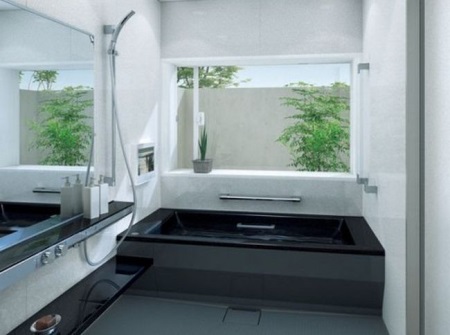Bathroom Faucet Design
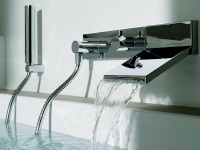
The faucet is an essential part of any bathroom. But it is necessary to choose it. You can't just point your finger at the first faucet that you see and say that it will be installed in the bathroom. In order to understand the correctness of the decision, you should first study the device of all types of faucets.
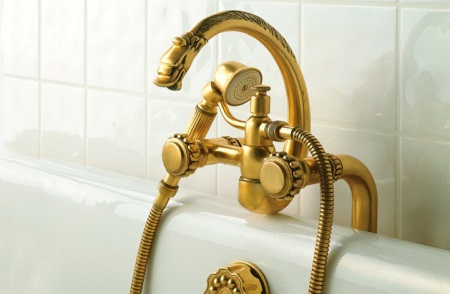
Today we will introduce you to the following types:
- Two-valve;
- Single-lever;
- Thermostatic;
- Non-contact.
Plus, we'll tell you which is the best faucet to choose for the bathroom and for the shower.
Two-handle
The basis of such a faucet are two faucet-boxes, which are located in a single body. By operating the valves, you can adjust the temperature and the head.
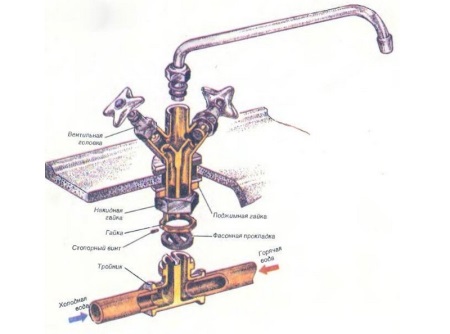
Dual-handle faucet is a classic of our time, until it was occupied by the single-lever models. Despite this, even today they are in demand. Especially when it comes to adapting the bathroom to certain interior styles - retro, classic or country.
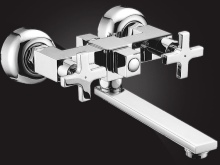
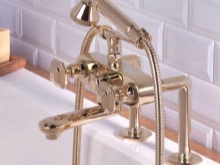

The main advantage of two-handle systems is their financial affordability. As for disadvantages, here we should note Failing rubber gaskets. If they are not replaced in time, the consequences can be very unpleasant.
Single lever
This design provides for the presence of only one lever. It is the one that is responsible for both the head and the temperature of the water supplied. It does this by changing the gap between the plates or spheres. They are responsible for the water supply from the hot and cold water supply.
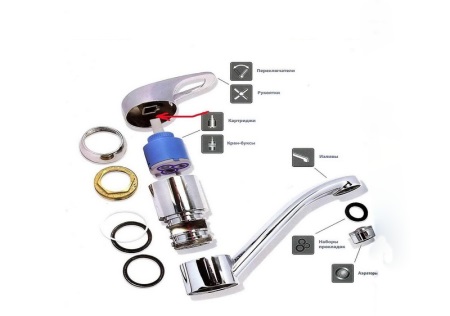
The single-lever faucet has proven to be incredibly popular nowadays, because it is very practical, easy to use, offered on the market for relatively little money. On top of that, It can be repaired quite independently., without resorting to the help of specialists.
Practicality - a really indisputable advantage of design. You need a minimum of effort and one hand to set the ideal temperature and pressure, based on your preferences. Moves to the right and left adjust the temperature, and pulling the lever up and down changes the flow rate.
The instantaneous water shut-off is also a favorite feature of many. You don't have to twist one valve and then the other, as you do with two-valve systems. And if your hands are also soapy, it will be extremely difficult to do this.

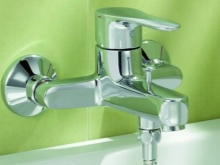
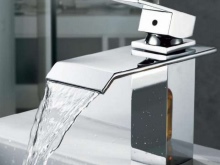
However, not everything is as serene as it seems at first glance. Single-lever faucets have certain disadvantages:
- Cartridge reliability. A large amount of water passes through them. Consequently, the load on them is high. If the element is made poorly, it will not last long. To replace it is not difficult even by yourself, but it is an unnecessary financial cost;
- The quality of faucets. Alas, now on the market there are a lot of fakes and products of dubious manufacturers. Therefore, if you have chosen a single-lever system, make sure that it is certified and made by a proven, reliable manufacturer.
They have no other disadvantages.
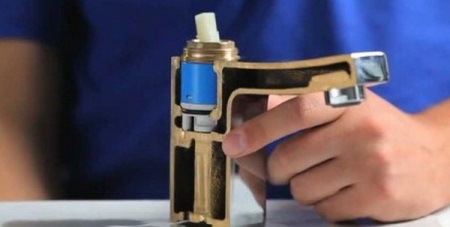
Thermostatic
If you compare them to previous versions of faucets, there are several obvious advantages to the thermostatic faucets.
- You don't have to turn the hot and cold water valves one at a time to get the right pressure and temperature.
- You don't have to wield a lever, move it left or right, up and down in search of the ideal settings.
- Temperature and head are set once and continuously adjusted to the amount of hot water in the boiler, for example, or the pressure in the water system.
- If necessary the temperature can be easily changed by controlling the thermostat.
- The product is equipped with a protection system. Its task is to prevent a person from dousing themselves with cold water or pouring a portion of boiling water.
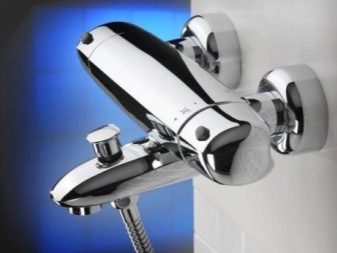

This design is quite simple. It includes a special element that performs mixing. It is controlled by a cartridge with wax or biometric plates. These plates respond to temperature changes, and the cartridge is activated by fluctuations in compression and expansion. A simple adjusting handle allows the user to set the desired temperature with a slight movement and shower comfortably.
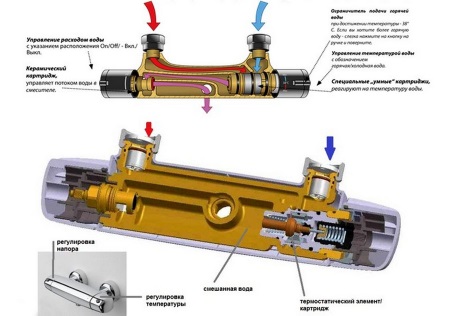
Non-contact .
They are also touch-sensitive. Let's note at once that they are not suitable for domestic use. Ideal place for them - public places, where there is a large gathering of people.
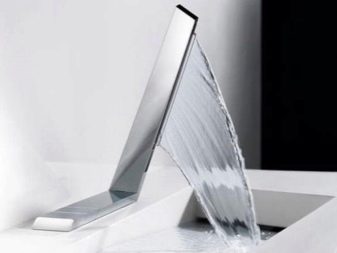

The device of such a mixer provides for the installation of special sensors, reacting through the work of infrared rays on heat, or on movement. It means that if a person puts his hands to the faucet, the water will start flowing immediately.
They can be adjusted in terms of duration and temperature. All this is fixed, so it is too problematic to constantly change the indicators.
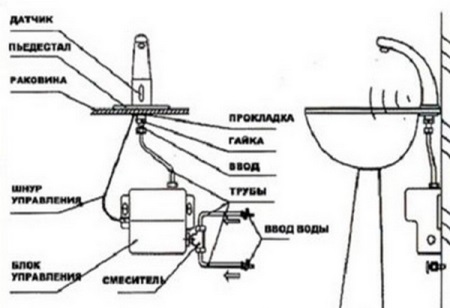
Some people fear that a hit of some object will turn on the faucet, and since it will remain lying in front of the sensors, the water will turn off only when the owners come home. As a result, flooding the neighbors and large financial losses. But this is all a fantasy, since the system provides for automatic shut-off after a preset time in the settings.
For the bathtub
So, we have understood the device of existing faucets today. Now let's talk about which ones are best suited for the bathtub.
As practice shows, the bathtub is usually used as a shower. Therefore, you will need a modern universal faucet that allows you to both draw water into the bathtub and switch to a watering can.
Some people put two faucets at once. One is designed strictly for the sink, so the switch to the shower does not have, and the second with a built-in shower head.
In terms of economy, the best solution would be a faucet with a long pivoting gooseneck. That way it can work for both the sink and the bathtub. Although for large families, it is worth choosing two separate faucets. After all, while one person takes a shower, the second will not have to wait to brush his teeth, for example.
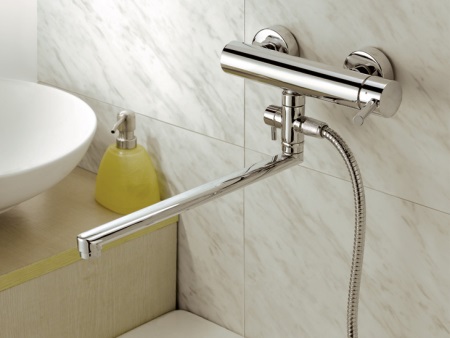
We can say that three types of faucets are suitable for the bathtub.
- Two-valve. A classic of the genre, which is inexpensive, but requires periodic repairs.
- Single-lever. It is easy to switch, adjust, instantly shut off the water. The weak side is the cartridge.
- Thermostatic. Also easy to control, you can set the temperature, protects against too cold and hot water.
So think about what suits more exactly to your requirements and features of the bathroom interior.
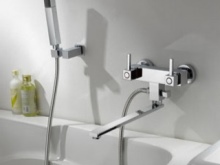
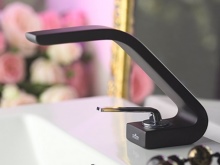
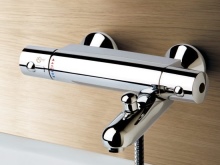
With shower
A faucet with a shower is installed directly above the sink. It is not recommended to use one system for the bathtub and sink, because they are still at a certain distance, and the watering can is held just on the faucet.
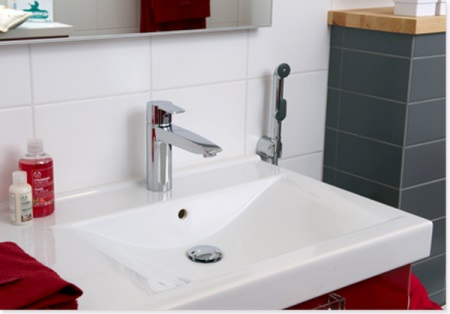
The optimal option is a single-lever faucet with a short spout. The spout will allow you to quickly draw water into the bathtub, if necessary, and the switch button will turn on your watering can. Many manufacturers offer special rods in the kit. They are designed to be mounted on the wall and serve as a holder for the shower head from the faucet.
Pay attention to the length of the hose, as well as the quality of the braid. Alas, some good faucets are sometimes supplemented with a shower head of not the best quality. But the good thing is that almost all of them are interchangeable. This will allow you to separately purchase a watering can, install it on the faucet.
Not everyone can afford to create a full-fledged tropical shower in the bathroom, so the alternative is the appropriate wide showerheads. By attaching them to the bar, you'll enjoy a stream of water that captures literally the entire width of your body.
